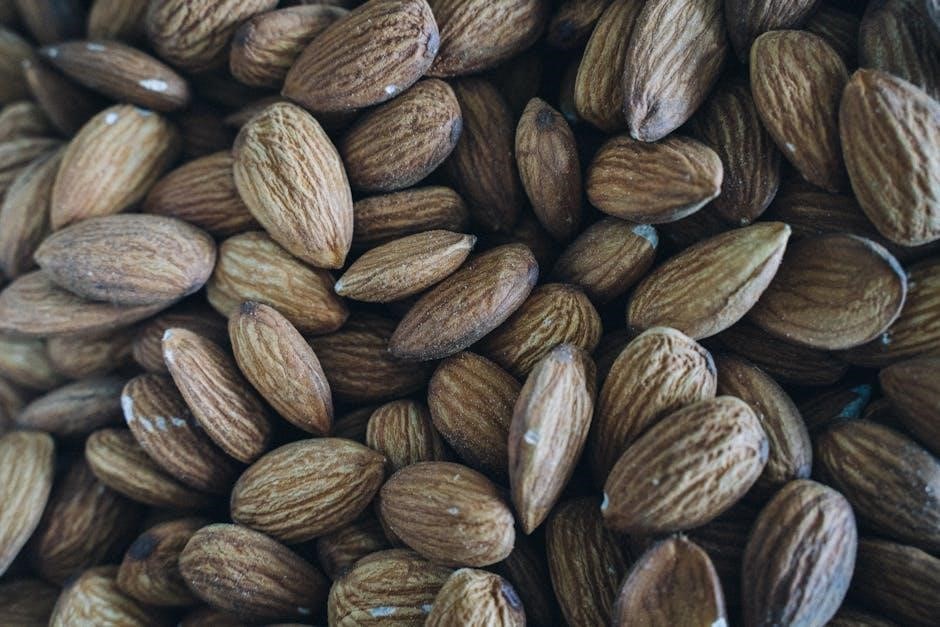Low-fat foods are essential for a healthy diet, reducing the risk of heart disease and aiding in weight management. They provide essential nutrients while minimizing saturated fat intake.
Overview of Low-Fat Diets
Low-fat diets focus on reducing overall fat intake, particularly saturated fats, to promote health and weight management. They emphasize whole, nutrient-rich foods like lean meats, fish, and plant-based options. By limiting processed and high-fat foods, these diets help lower cholesterol and reduce the risk of heart disease. They are often tailored to individual needs, offering flexible meal plans that balance nutrition with flavor. Incorporating low-fat alternatives and mindful portion control are key strategies for success. These diets are widely recommended for improving overall well-being and maintaining a healthy lifestyle.
Why Choose Low-Fat Foods?
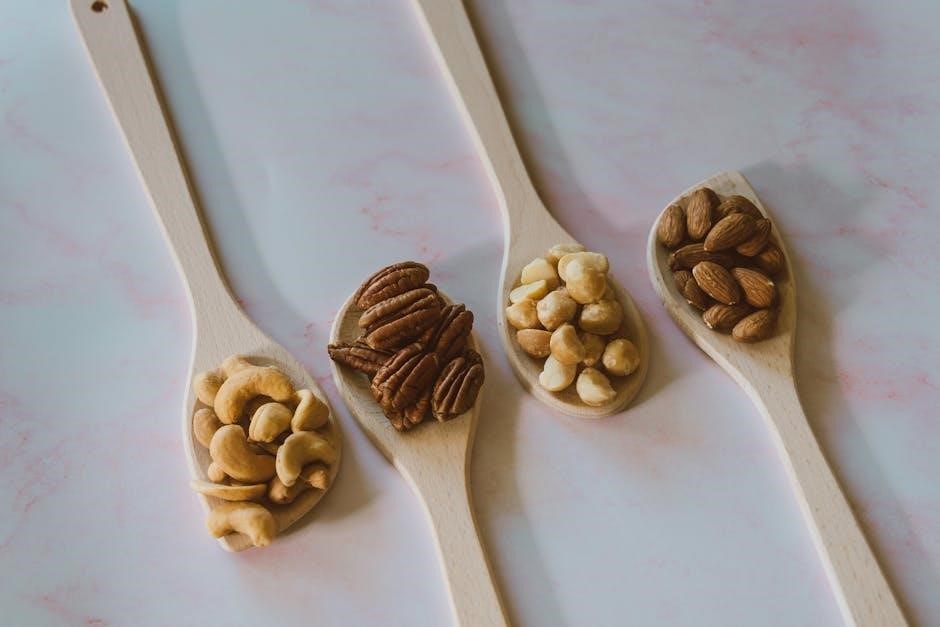
Choosing low-fat foods supports heart health by reducing saturated fat and cholesterol intake, lowering the risk of cardiovascular diseases. They aid in weight management by providing fewer calories, making it easier to maintain a healthy BMI. Low-fat diets also promote better blood sugar control and can reduce the risk of type 2 diabetes. Incorporating these foods fosters a balanced diet rich in essential nutrients, vitamins, and minerals, ensuring overall well-being without compromising on flavor or satisfaction.
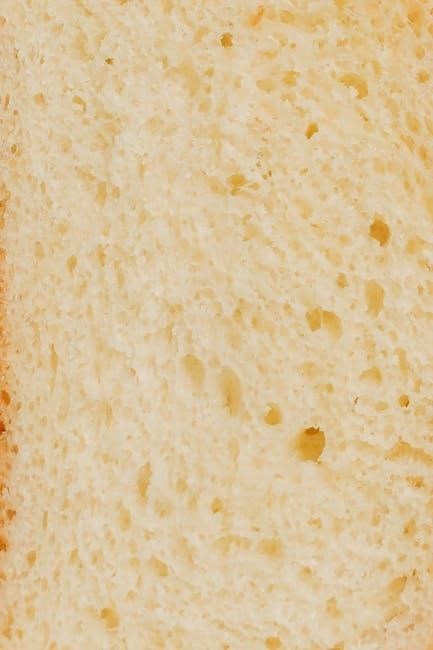
Understanding Low-Fat Foods
Low-fat foods are dietary options with reduced fat content, helping to minimize health risks like heart disease and obesity while supporting weight management and overall well-being.
Definition and Benefits of Low-Fat Diets
A low-fat diet focuses on reducing dietary fat intake, particularly saturated fats, to promote health. Benefits include weight management, improved heart health, and reduced risk of chronic diseases. It encourages consumption of nutrient-rich foods like fruits, vegetables, and whole grains, which are naturally low in fat. By limiting processed and high-fat foods, individuals can achieve better overall nutrition and well-being. This approach is often recommended for those aiming to maintain a healthy lifestyle and prevent diet-related illnesses.
How to Identify Low-Fat Foods
Identifying low-fat foods involves checking nutrition labels for fat content. Look for products with less than 3 grams of fat per serving. Opt for lean meats, fish, and poultry without skin. Choose low-fat or fat-free dairy products and incorporate plenty of fruits, vegetables, and whole grains. Avoid processed and fried foods, which are typically high in fat. Using resources like a list of low-fat foods PDF can help guide your selections, ensuring you make healthier choices easily. These tools provide clear guidelines for making informed decisions.
Categories of Low-Fat Foods
Low-fat foods include lean meats, poultry, fish, and plant-based options like legumes. Low-fat dairy, whole grains, fruits, vegetables, and healthy snacks also fall under this category, aiding balanced nutrition.
Lean Meats and Poultry
Lean meats and poultry are excellent sources of protein with minimal fat. Opt for chicken breast, turkey, or fish like salmon. Trim visible fat and choose grass-fed options for higher omega-3 content. Avoid processed meats as they contain added preservatives and saturated fats. Incorporating these into meals helps maintain muscle mass while keeping fat intake low. Season with herbs and spices for flavor without adding extra fat. Pairing lean meats with vegetables creates a balanced and nutritious meal.
Low-Fat Dairy Products
Low-fat dairy products are rich in calcium and vitamins while containing minimal saturated fat. Options include skim milk, low-fat yogurt, and reduced-fat cheese. These products support bone health and are versatile in meals. Choose unflavored varieties to avoid added sugars. Incorporating them into smoothies or as snacks provides essential nutrients without excessive fat. Opting for plant-based alternatives like almond or soy milk can also be a low-fat dairy substitute. These choices help maintain a balanced diet while reducing fat intake effectively.
Fruits and Vegetables
Fruits and vegetables are naturally low in fat and high in fiber, vitamins, and minerals. They include apples, berries, leafy greens, and cruciferous vegetables like broccoli. These foods support healthy digestion and provide antioxidants. Incorporating a variety into meals ensures a balanced intake of essential nutrients. They are versatile, suitable for snacks, salads, and main dishes. Choosing seasonal produce can enhance flavor and nutritional value. Fruits and vegetables are fundamental components of a low-fat diet, promoting overall well-being and energy levels naturally.
Whole Grains and Legumes
Whole grains like oats, quinoa, and brown rice are excellent low-fat options, rich in fiber and nutrients. Legumes, such as lentils, chickpeas, and black beans, are high in protein and fiber, making them hearty additions to meals. Both are versatile, suitable for soups, salads, and main dishes. They provide sustained energy and support healthy digestion. Incorporating whole grains and legumes into a low-fat diet helps maintain balanced nutrition and reduces the risk of chronic diseases like heart disease and diabetes.
Healthy Snacks and Alternatives
Healthy snacks like fresh fruits, raw vegetables, and air-popped popcorn are excellent low-fat options. Nuts and seeds, in moderation, provide healthy fats without excessive calories. Low-fat yogurt and cottage cheese are great protein-rich snacks. Whole-grain crackers with hummus or avocado offer satisfying alternatives to high-fat treats. These snacks are nutrient-dense, helping to curb hunger and support overall health. Incorporating them into your diet ensures you stay on track with your low-fat goals while enjoying delicious and satisfying options.
Tips for Incorporating Low-Fat Foods
Plan meals with lean proteins, whole grains, and fresh produce. Use low-fat dairy and baking instead of frying to reduce fat. Track progress to stay motivated.
Cooking Methods to Reduce Fat
Cooking methods play a crucial role in reducing fat content in meals. Grilling, baking, and steaming are excellent alternatives to frying. Use non-stick pans to minimize oil usage. Opt for roasting or poaching to retain flavors without added fats. Marinating meats before cooking can enhance taste without extra oil. Incorporating herbs and spices adds flavor naturally. Avoid deep-frying and instead try air-frying for a healthier crunch. These methods ensure dishes remain nutritious and low in fat while maintaining delicious taste.
Meal Planning Strategies
Effective meal planning is key to maintaining a low-fat diet. Start by creating a weekly menu that incorporates balanced, nutrient-rich meals. Focus on whole foods like lean proteins, vegetables, and whole grains. Use PDF guides or online tools to track and plan meals. Portion control is essential to avoid overconsumption. Swap high-fat ingredients with healthier alternatives, such as using herbs for flavor instead of oils. Prep meals in advance to avoid last-minute unhealthy choices. A well-organized plan ensures variety and keeps meals enjoyable while staying low in fat.
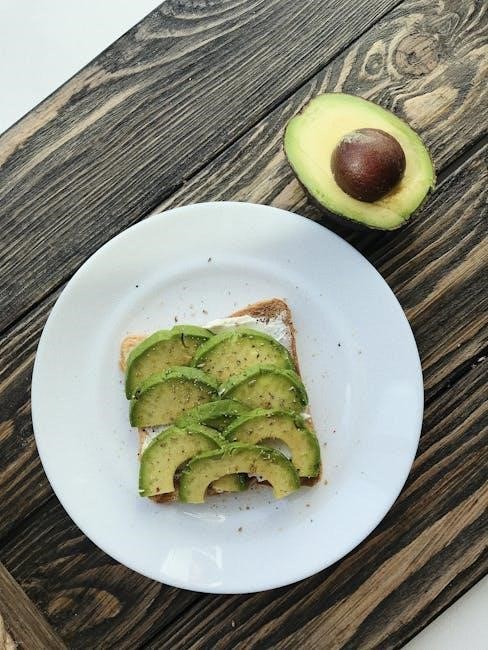
Resources for Low-Fat Food Lists
Discover reliable PDF guides and online tools for tracking fat intake. Popular platforms like MyFitnessPal offer detailed lists of low-fat foods, aiding in meal planning and nutrition management.
PDF Guides and Printable Lists
PDF guides and printable lists are excellent resources for identifying low-fat foods. Websites like MyFitnessPal and health organizations offer downloadable charts and detailed tables. These documents categorize foods by fat content, making meal planning easier. They often include nutritional information, serving sizes, and tips for making healthier choices. Printable lists are convenient for grocery shopping, helping you stick to your dietary goals. Utilize these tools to organize your low-fat diet effectively and sustainably for better health outcomes and weight management.
Online Tools for Tracking Fat Intake
Online tools like MyFitnessPal and Lose It! simplify tracking fat intake by providing databases of low-fat foods. These platforms allow users to scan barcodes, log meals, and set daily fat goals. They offer detailed nutritional insights, helping users identify high-fat foods and make healthier swaps. Some apps even generate meal plans based on preferences, ensuring balanced nutrition. Regular use of these tools promotes awareness and accountability, aiding in maintaining a low-fat diet effectively and achieving long-term health benefits.
Low-fat foods are crucial for a healthy lifestyle, reducing heart disease risk and aiding weight management. They include fruits, vegetables, lean proteins, and whole grains, supporting overall well-being.

The Importance of Balanced Nutrition

A balanced diet is key to maintaining overall health, combining essential nutrients, vitamins, and minerals. Incorporating low-fat foods ensures a reduction in saturated fats, promoting heart health and weight management. Balanced nutrition helps prevent chronic diseases, boosts energy levels, and supports mental well-being. By focusing on whole foods, lean proteins, and healthy fats, individuals can achieve a sustainable and nutritious lifestyle. Utilizing resources like PDF guides and trackers can aid in making informed dietary choices, fostering long-term health benefits.
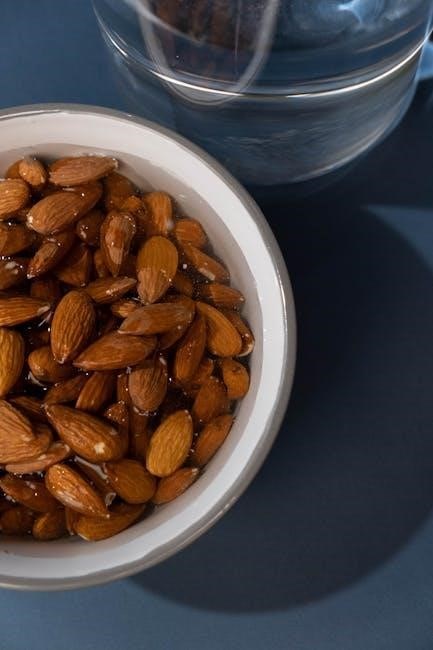
Final Thoughts on Low-Fat Diets
Low-fat diets are a practical and sustainable way to promote health and well-being. By focusing on nutrient-rich, low-fat foods, individuals can reduce the risk of chronic diseases while maintaining energy levels. Incorporating resources like PDF guides and trackers can simplify the process of identifying and planning meals. Remember, balance is key—pairing low-fat options with whole foods ensures a diverse and satisfying diet. Embrace low-fat eating as a long-term commitment to better health and vitality.
